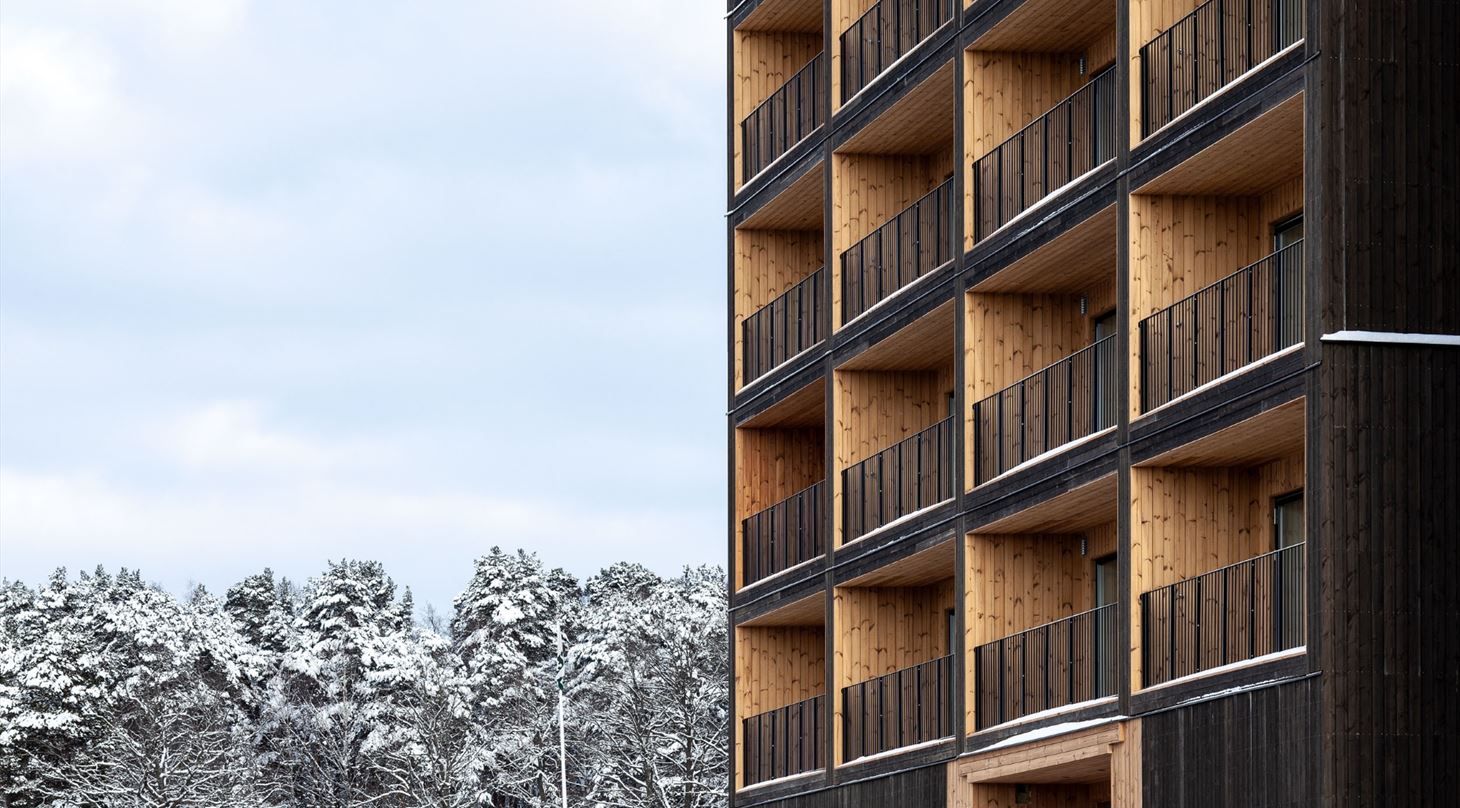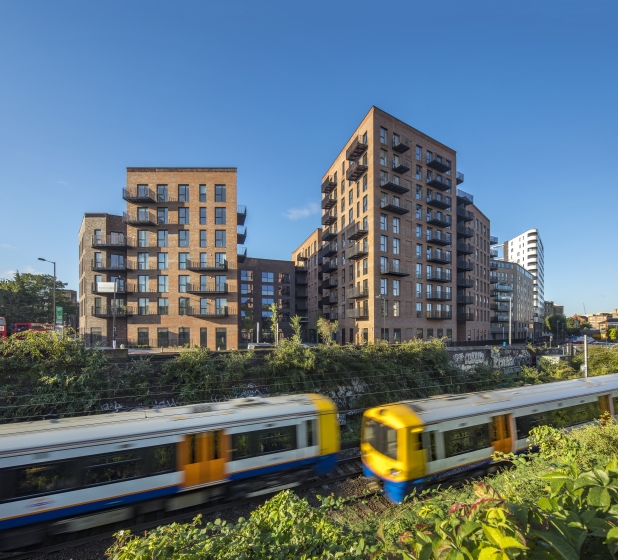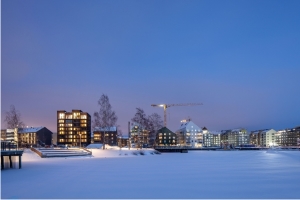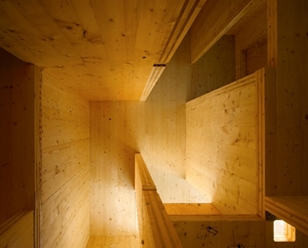
European project combats climate change with wood buildings
Top image: 9 storey building in wood, Kajstaden, Sweden. Photo: C.F. Møller.
The construction sector is one of Europe’s largest CO2-emmittors. A European innovation project targets reduction of CO2 emissions through increased use of wood for multi-story buildings. ’We want to take multi-story wood buildings mainstream’ says project coordinator.
Widespread construction of multi-story wood buildings could significantly reduce CO2 emissions from the construction sector. An international cooperation wants the construction industry to rediscover wood as the ideal building material. A consortium, consisting of 21 partners has been awarded funding by Horizon 2020 to deliver a pan European innovation project ’Build-in-Wood’. The 10 million € project has the objective of significantly increasing the use of wood for multi-story buildings.
Our goal is simple. To make wood the common choice of material for construction of multi-story buildings. We’re not trying to create the world’s tallest wood building, we’re trying to maximise our impact by targeting wood-based building systems for 3-10 storey buildings, where European demand is highest, says project coordinator Niels Morsing from Danish Technological Institute.
The construction sector is one of Europe’s largest CO2 contributors. Years of targeted legislation has significantly reduced emissions from operational energy of European buildings, however the significant contribution from the production of building materials and the building process has gone below the radar. But there are easy fruits to harvest in terms of CO2 emission reductions by increasing the use of wood in construction. Trees absorb CO2 from the atmosphere when they grow and store it in the form of wood. When we build with wood we can use our buildings and cities as large carbon storing devices.

10 storey building in wood, Dalston Works, London, UK. Photo: Waugh Thistleton Architects Ltd.
Re-discovering wood
Consortium partners have first hand experience of the technical, economic, and environmental advantages multi-storey wood buildings can offer, says Niels Morsing who lists some of the benefits as building with renewable materials, CO2 sequestration, GHG reductions, fast construction, light materials, easy transport and assembly, precise construction, high prefabrication potential, increased productivity, good indoor environment, and a silent and non-dusty working environment.
A number of barriers currently hinder the spread and adoption of multi-storey wood construction projects in Europe and beyond. These barriers include a general lack of industry knowhow and experience with wood as a construction material. The construction sector prefers familiar concrete and steel solutions and relates wood buildings with high risk – especially regarding finances and security. The task for the project is to remove these barriers by developing standardized and industrialized solutions for multi-storey wood buildings, while documenting the environmental, economic, and social effects and consequences of the solutions.
Huge demand for multi-storey buildings
Due to urbanisation and the continuous renewal of the European building stock, demand for new multi-story buildings is high. This creates huge potential for increasing the use of wood in construction - European demand for construction of apartments is estimated at 1.6 million units annually between 2020 and 2050.
Experience shows that building with wood is incredibly fast compared to other materials. Since wood is significantly lighter than for example concrete, the need for heavy transportation in the building process is reduced and you can build more stories and gain more square meters in areas where ground conditions limit the weight of the building. So, there are not only environmental reasons but also economic arguments for increasing the use of wood in construction, says Niels Morsing.
The consortium partners represent the entire value chain from building materials to the finished structure. In addition to designing building systems, the project also involves end users, politicians, and local European communities to increase the knowledge and acceptance of wood as a building material in European society.
Build-in-Wood receives funding from the European Union’s Horizon 2020 research and innovation programme under grant agreement No 862820 and runs for four years from September 2019 to August 2023.

9 storey building in wood, Kajstaden, Sweden. Photo: C.F. Møller.

Interior of wood building during construction, Murray Grove, London, UK. Photo: Waugh Thistleton Architects Ltd.


Build-in-Wood consist of the following partners.
Danish Technological Institute (Coordinator) | Denmark |
The Norwegian Institute of Wood Technology | Norway |
C.F. Møller | Sweden |
National Technical University of Athens | Greece |
Urbasofia SRL | Romania |
Brasov Metropolitan Agency | Romania |
Waugh Thistleton Architects Ltd. | United Kingdom |
The Alexandra Institute | Denmark |
University of Siena | Italy |
proHolz Tirol | Austria |
Bimetica Parametric Design Services S.L. | Spain |
Rotho Blaas SRL | Italy |
rtd services OG | Austria |
Adserballe & Knudsen A/S | Denmark |
Ergodomus Timber Engineering | Italy |
Habitech – Distretto Tecnologico Trentino S.c.a r.l. | Italy |
Splitkon AS | Norway |
Knauf Gips KG | Germany |
Scandi Byg A/S | Denmark |
hsbCAD GmbH | Germany |
EllisDon | Canada |
Read more